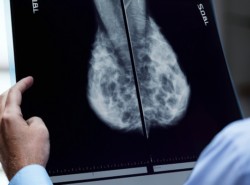
Understanding how changes in DNA drive breast cancer development
Published: 10/7/19 11:23 PM

Stacey Edwards
Cancer is driven by changes in DNA (mutations) that alter the behaviour of normal cells, making them cancerous. Two DNA mutations are found specifically in Luminal B-type breast cancer, which accounts for 15-20% of breast cancers.
Luminal B breast cancer is an aggressive subtype that starts in the inner (luminal) cells lining the mammary ducts. Women with Luminal B breast cancer typically have poorer survival compared to other estrogen receptor-positive tumours.
This study, conducted by NBCF-funded Associate Professor Stacey Edwards, aims to determine why and how these mutations lead to the development of breast cancer. Understanding how these mutations drive breast cancer is a critical first step in identifying new avenues for the treatment of this cancer subtype.
Early results from this project indicate that two genes, called NMBR and GPR126, are altered in patients with either mutation of Luminal B breast cancer. Associate Professor Stacey Edwards has already identified two existing drugs that may be clinically useful for the treatment of patients that have these mutations, offering an innovative and exciting way forward for the treatment of Luminal B-type breast cancer.

